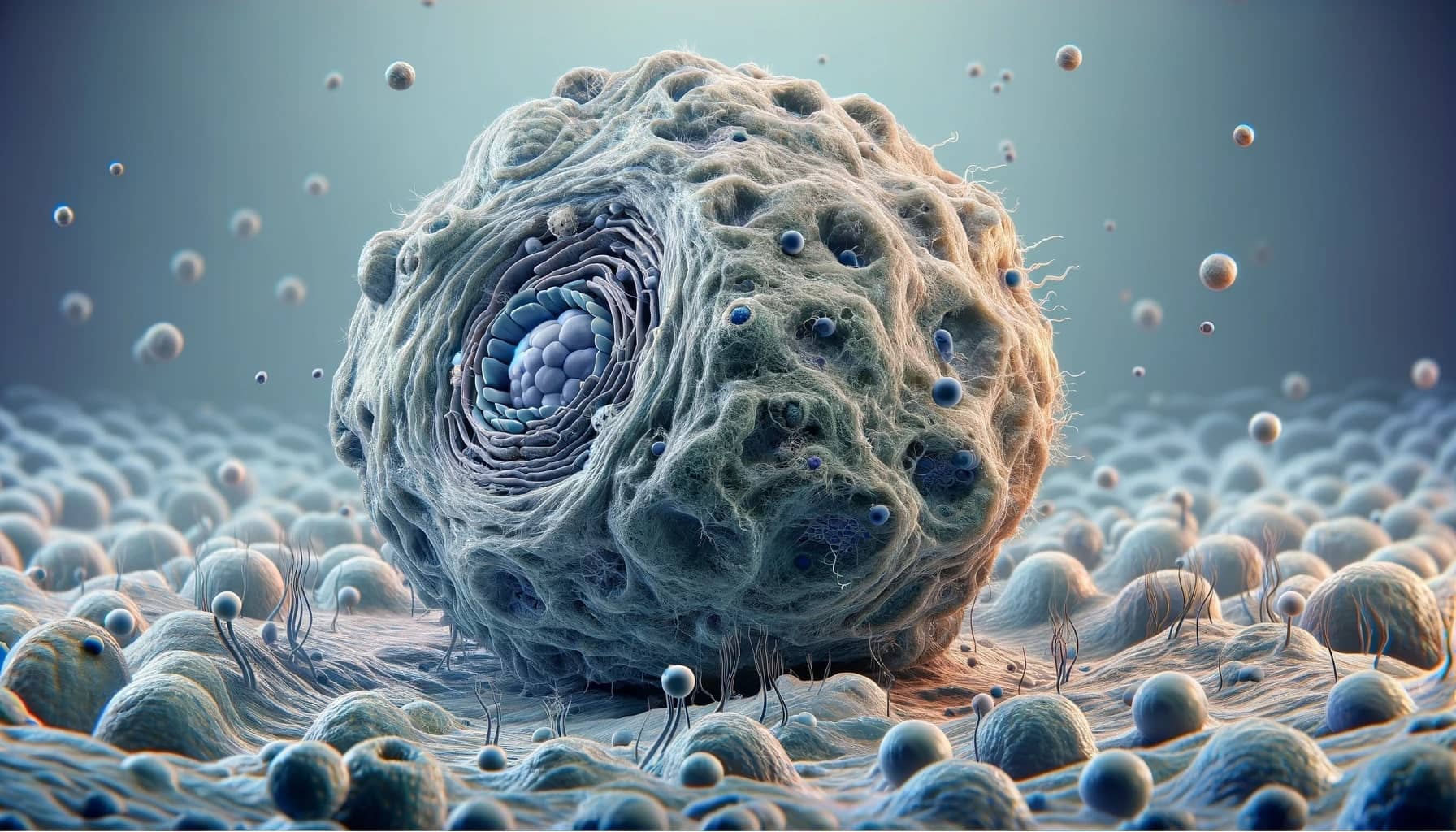
Exploring Cell Senescence: A Journey into Cellular Aging
What Makes Cells Age and Change?
In the fascinating world of cells, we often hear about cellular aging and senescence. But what are they? These processes are like the different colors of a sunset, adding depth to our understanding of aging. They could help us find new ways to treat age-related diseases and maybe even help us stay healthy as we get older.
The Beginning of Understanding Cell Changes
Back in 1961, scientists Hayflick and Moorhead discovered something amazing. They found that normal cells, unlike cancer cells, can only divide a limited number of times. This led to the idea of “senescence“, which was first thought to be just cells filling up with waste.
What Does Cell Senescence Mean Today?
Now, we know that cell senescence is when a cell stops dividing and starts changing its shape, what it secretes, and how its genes work. This is a crucial part of a cell’s life.
The Bigger Picture of Cellular Aging
While senescence is a specific moment, cellular aging is about the overall decline in a cell’s ability to function and its increased chance of dying. This process starts way before a cell stops dividing.
Recent Advances in Studying Cell Changes
In recent years, we’ve learned a lot more about cell senescence, especially in living beings. New techniques have opened doors, but it’s still tough to measure these changes in tissues.
Spotting Aging Cells in the Body
Inside our bodies, cells that stop dividing are rare but important. Studies show a big range in how many cells show signs of senescence, and some tissues have more than expected.
Identifying Senescent Cells in Living Organisms
It’s hard to find these cells in living beings. The markers, like DNA damage or special enzymes, can also be found in cells at different life stages, making it hard to understand these processes.
Understanding the Markers of Cellular Aging
Markers that show a cell is aging can also be found in cells that are dividing and building up over time. Knowing what these markers really mean is important for understanding the relationship between aging and senescence.
The Debate on How to Spot Senescence
No single marker perfectly identifies senescent cells. Some markers, like DNA damage, are also found in aging cells, making it tricky to interpret them in a living being.
The Promise of Senolytic Treatments
Senolytic treatments, which aim to remove senescent cells, look promising. They focus on cells with DNA and lipid damage, suggesting these markers are useful for identifying senescent cells.
A Combined Approach to Studying Cell Senescence
Using various markers together might give us a better understanding of cell senescence. This could help us figure out why diseases related to aging happen, telling the difference between problems caused by aging and those caused by senescence.
Observing Cell Aging and Senescence in Animals
Studies on aging mice show interesting patterns. While the number of cells with senescence markers levels off in older mice, markers of cellular aging keep increasing. This difference could be key in developing treatments for age-related diseases.
The Future of Research on Cell Senescence
More research is needed, especially at the single-cell level, to better understand cell senescence. This will help in creating treatments for diseases related to aging.
The Exciting Potential of Studying Cell Senescence
The study of cellular aging and senescence is full of potential. It’s about more than just understanding how we age; it’s about finding new treatments for age-related diseases and possibly extending our healthy years.
Continuing the Exploration
As we keep exploring cellular aging and senescence, we’re on the verge of exciting discoveries. These tiny cellular processes might hold the key to living longer and healthier lives, much like stars in the night sky hold secrets of the universe.
